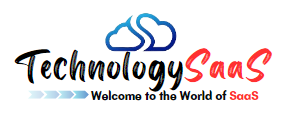As SaaS applications become more widely used, their security is crucial for protecting sensitive data and maintaining business operations. This article highlights the key risks and best practices for ensuring SaaS app security.
1. Understanding the Security Risks in SaaS Applications
SaaS apps are hosted by third parties, exposing businesses to risks such as data breaches, weak user authentication, vendor security failures, and misconfigured settings.
1.1 Data Breaches
SaaS apps store sensitive data, making them prime targets for cyberattacks that can lead to exposure of personal or business-critical information.
1.2 Insecure User Authentication
Weak authentication methods allow unauthorized users to access sensitive accounts, increasing the risk of data loss or breach.
1.3 Vendor-Related Security Risks
Security depends on the provider’s practices, meaning a weak vendor security posture can affect your data protection.
1.4 Misconfigured Application Settings
Improper settings, such as open APIs or inadequate access controls, can inadvertently create security gaps in SaaS applications.
2. Best Practices for Securing SaaS Applications
Implementing strong security practices can protect your SaaS applications from vulnerabilities and threats.
2.1 Implement Multi-Factor Authentication (MFA)
MFA enhances security by requiring additional verification steps, making it harder for attackers to gain unauthorized access.
2.2 Encrypt Data Both In-Transit and At-Rest
Encrypting data ensures it is protected from unauthorized access, both while being transferred and when stored.
2.3 Enforce Access Control and Least Privilege Principles
Access control limits user permissions to only what is necessary, reducing the risk of unauthorized access to sensitive data.
2.4 Conduct Regular Security Audits and Penetration Testing
Frequent audits and tests help identify vulnerabilities and fix them before they can be exploited.
2.5 Educate and Train Employees on Security Awareness
Regular security training ensures employees are aware of threats and how to avoid them, reducing the chance of human error.
2.6 Ensure Compliance with Industry Regulations
Compliance with regulations like GDPR or HIPAA ensures that the SaaS provider meets necessary data protection standards.
3. Securing APIs and Third-Party Integrations
APIs and third-party integrations must be secured to prevent vulnerabilities from being exploited by external services.
- Use Strong Authentication: Protect APIs using strong authentication methods.
- Monitor API Traffic: Track API activities to detect any suspicious behavior.
- Ensure Secure Data Transmission: Use secure protocols like HTTPS to protect data in transit.
4. Disaster Recovery and Data Backup
A strong backup and recovery plan helps mitigate the impact of data loss due to cyberattacks or technical failures.
- Ensure Frequent Backups: Regular backups ensure data can be restored if lost.
- Test Disaster Recovery Plans: Testing ensures recovery procedures work effectively during emergencies.
5. Emerging Trends in SaaS Security
New technologies and practices are shaping SaaS security, such as the Zero Trust security model, AI-driven threat detection, and behavioral analytics to detect anomalies.
6. Conclusion
Securing SaaS applications requires a proactive approach, incorporating best practices like MFA, encryption, regular audits, and compliance with regulations. Staying updated with emerging trends will help organizations address new security challenges effectively.


